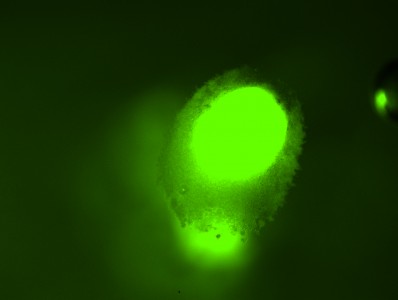NSU Newsroom
SharkBytes
Horizons
This version of NSU News has been archived as of February 28, 2019. To search through archived articles, visit nova.edu/search. To access the new version of NSU News, visit news.nova.edu.
This version of SharkBytes has been archived as of February 28, 2019. To search through archived articles, visit nova.edu/search. To access the new version of SharkBytes, visit sharkbytes.nova.edu.
NSU Research Spotlight: Researchers Try to Reduce Antibiotics Resistance

Cortney Wilson, pictured here, was lead author on the manuscript. She graduated from the Master’s in Biological Sciences program at Nova Southeastern University in 2016, and is currently at the University of Colorado, Boulder.
Just prior to winning his Nobel Prize in 1945, Alexander Fleming, the scientist who discovered antibiotics, warned that the overuse of antibiotics would lead to bacteria that were no longer killed by these drugs. Since then, scientists and bacteria have been locked in a deadly arms race. While scientists rush to discover new antibiotics, bacteria fight back by developing new tools to resist antibiotics. In recent years, the bacteria have been winning.
“More and more antibiotics are essentially becoming useless,” says Dr. Robert Smith, Assistant Professor in the Department of Biological Sciences at Nova Southeastern University. “Even the most routine infections, such as ear infections that are often seen in children, are becoming more challenging and expensive to treat.” Scientists, such as Smith, are now focusing on developing new ways to treat infections that reduce the use of antibiotics.

Wilson and Smith found that by shaking a population of bacteria, like those shown in this image, their ability to communicate was affected.
One way that bacteria infect people is by working together. First, they build a home called a biofilm, and then use chemicals to talk to each other. This allows the bacteria to coordinate an attack on the infected person. Led by graduate student Cortney Wilson, Smith’s lab recently discovered that by shaking the house that the bacteria have built, the ability of the bacteria to talk to one another is affected. Their findings are detailed in the March 27 edition of Scientific Reports.
“We found that shaking the bacteria forced them to face a decision; do they want to grow, or do they want to cooperate. And if we shook them at just the right frequency, we created enough confusion that the bacteria could do neither effectively.” Smith notes that this strategy to prevent bacteria from talking to one another has promise in reducing the need for antibiotics.
The team of scientists, which includes members from Nova Southeastern University, Duke University and the University of Minnesota, hope to begin testing their theory in more species of bacteria, and eventually in mice.
“It is a very exciting time for our research team. We are looking forward to building upon our very promising results and to moving our strategy into the clinic.”
You can read the publication here:
http://www.nature.com/articles/s41598-017-00588-9